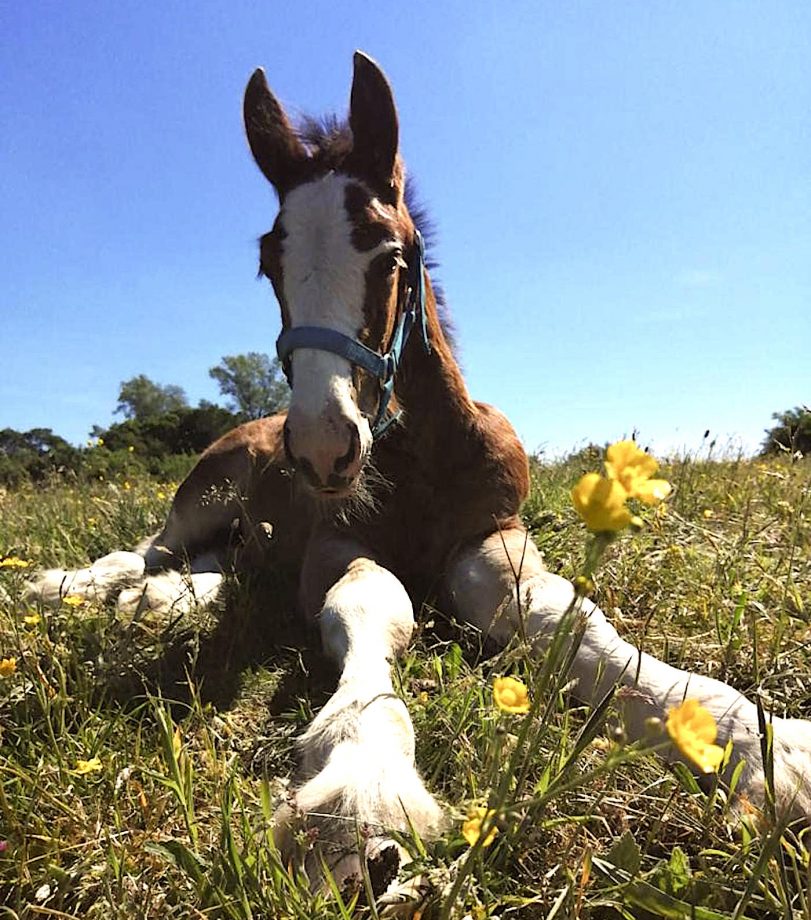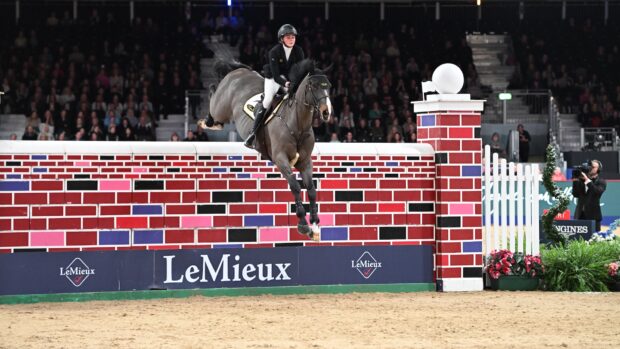The work of two Shire horses in the Tower of London moat should help create a wildflower meadow in the centre of the city this summer.
Former rescue horse William, six, and his experienced partner Joey, 14, have been at the Tower harrowing, then going back over the ground after the seeds were spread, in hopes the moat will bloom.
Andreas Liefooghe is the managing director of Operation Centaur, whose horses have been carrying out conservation work at royal palaces for 30 years. The Shires also work in the royal parks, including creating and maintaining wildflower meadows, controlling bracken and logging.
Professor Liefooghe told H&H a meadow was created in the moat last summer to mark the late Queen’s Platinum Jubilee but that the dry summer meant the area “needed quite a bit of help”.
“So we came from Hampton Court Palace, to disc-harrow, first,” he said. “Then the garden team broadcast the wildflower seeds and we had another light harrow, which should be sufficient.”
Professor Liefooghe said wildflowers will not grow well in ground that has been compacted, so the Shires are far preferable to heavy machinery.
“We’re not romanticising and saying the whole world should go back to farming with them, but in these really quite special places, it makes a lot more sense to bring them in,” he said. “In Kensington Gardens, we took over Buck Hill about six years ago, and since then the wildflowers have been abundant, where before was just grass and nettles. By using these horses, people are seeing wildflowers in central London, where they hadn’t been seen for decades.”

Professor Liefooghe added that more people, and authorities, are starting to see the benefits of the Shires’ work.
“They see it totally makes sense and is economically viable,” he said. “We won’t compete with big contractors sending in machines but even councils are starting to see there’s something in a bespoke service for specialised areas. And local communities aren’t putting up with that treatment any more; in one area, contractors mowed a wildflower meadow that was just about to seed; with us, if we need to wait a week, we wait. It’s stewardship of the land rather than thinking ‘We need to get on with it’.”
Operation Centaur has a small breeding programme, with one foal due this year, and some rescued Shires like William.
“They’ve got a reputation for being gentle giants, which they are, but they have their moments, like any horses,” Professor Liefooghe said. “They need a lot of care and they eat a lot, so they tend to get abandoned and we inherit them; they tend to get too much for people.
“But they just love their work; a lot of people can’t catch horses but ours queue up to come in: ‘Pick me, pick me!’ They love working with you; they’re colleagues who work alongside us.”
The Shires live at both Richmond Park and Hampton Court, where there is 40 acres of turnout for them to “be horses”. And when they retire, Professor Liefooghe, who is also a psychotherapist, involves them in his therapy programmes.
“They don’t do well just living in the field,” he said. “When they’ve spent their lives with people, they don’t understand it, so that’s a really nice job for them. They stay with us till their last days.”
You might also be interested in:

Shire foal orphaned when walkers fed his dam thrives thanks to 33 pints of bottle-fed milk a day

Grey Shires perform final act of service for The Queen

Subscribe to Horse & Hound magazine today – and enjoy unlimited website access all year round




